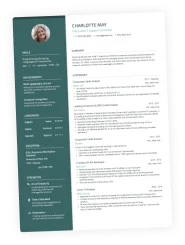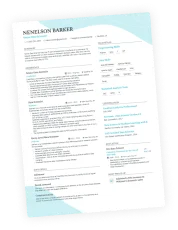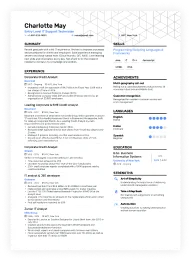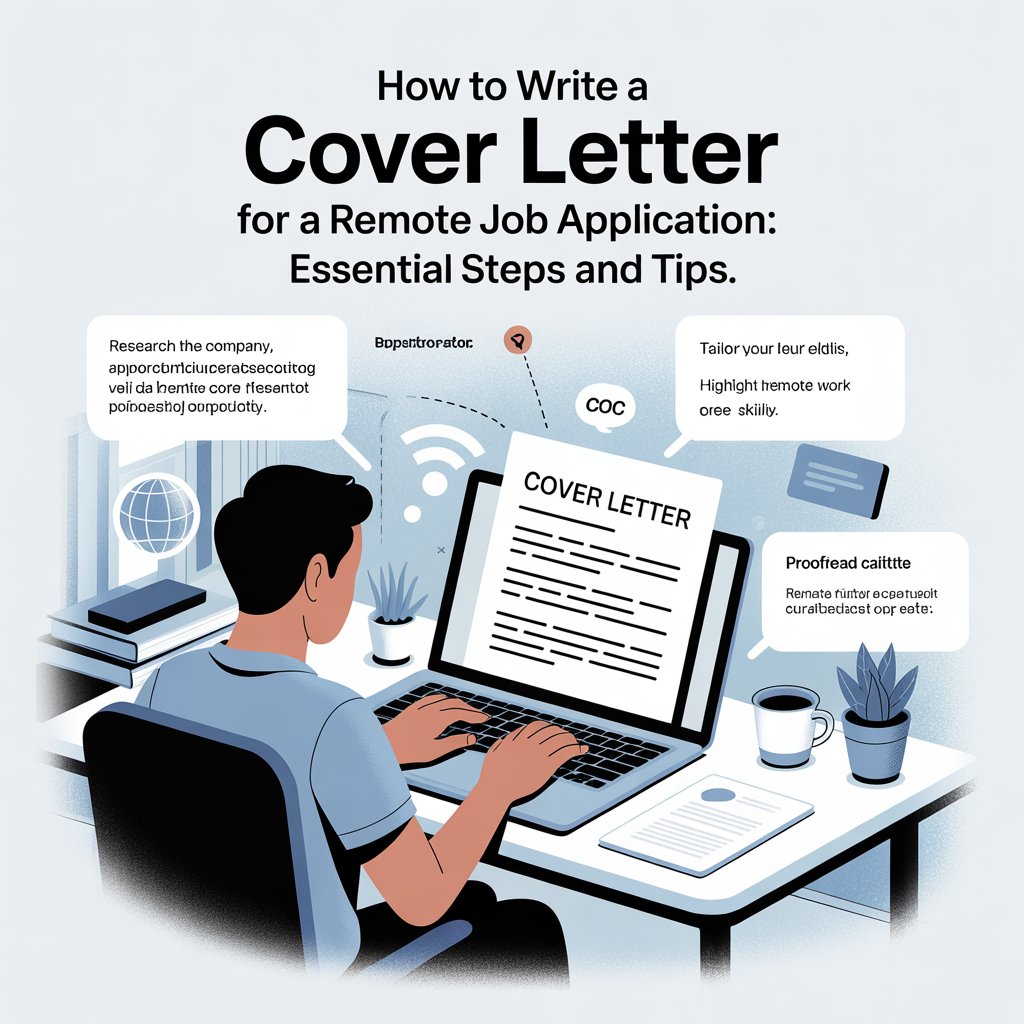Writing a cover letter for a medical assistant position can feel overwhelming, especially with so much competition out there. But don’t worry! Crafting the perfect cover letter doesn’t have to be a chore. With a few key strategies and a personal touch, you can make your application stand out. Let’s break down the essentials you need to know to create a compelling cover letter that gets you noticed in 2025.
Key Takeaways
- Understand the specific duties and skills needed for medical assistants.
- Tailor your cover letter to reflect the values of the healthcare facility you’re applying to.
- Use a clear structure: introduce yourself, highlight your experience, and end with a strong call to action.
- Showcase both your technical skills and your ability to connect with patients.
- Avoid common pitfalls like using generic templates or failing to proofread.
Understanding the Role of a Medical Assistant
Key Responsibilities of Medical Assistants
Being a Medical Assistant (MA) is more than just a job; it’s a vital role in healthcare. MAs are the glue that holds many clinics and offices together. They handle a mix of administrative and clinical tasks, making sure everything runs smoothly. Think of them as the multi-tasking masters of the medical world. One minute they might be scheduling appointments and handling paperwork, and the next they’re assisting with exams or taking patient histories. It’s a job that keeps you on your toes, and it’s definitely not for those who like routine. The specific duties can change based on the size and type of the healthcare facility, but the core responsibilities generally stay the same.
- Taking patient vital signs
- Administering injections
- Preparing patients for examinations
Essential Skills for Success
To really shine as a Medical Assistant, you need a specific set of skills. It’s not just about knowing medical terminology (though that’s important, too!). You need to be organized, detail-oriented, and have great communication skills. You’re dealing with patients who might be stressed or scared, so being able to put them at ease is key. Technical skills, like knowing how to use electronic health records (EHR) systems, are also a must in today’s digital healthcare landscape. And don’t forget the soft skills – empathy, patience, and a positive attitude can go a long way in making a patient’s experience better. Having a solid grasp of both clinical and administrative procedures is essential for success. You’ll also need to be able to work well under pressure, as things can get pretty hectic in a medical setting.
Medical assisting is a field where continuous learning is important. New technologies and procedures are always emerging, so staying up-to-date is crucial for providing the best possible care.
The Importance of Patient Interaction
Patient interaction is a huge part of being a Medical Assistant. You’re often the first person a patient sees when they come in, and your interactions can set the tone for their entire visit. Being friendly, approachable, and empathetic can make a big difference in how comfortable a patient feels. It’s about more than just taking their temperature or asking about their symptoms; it’s about listening to their concerns and making them feel heard. Good communication skills are essential for building trust and rapport with patients. This includes active listening, clear explanations, and the ability to answer questions in a way that’s easy to understand. Remember, positive patient interactions cover letters for different job types not only improve the patient experience but also contribute to the overall success of the healthcare facility. For those considering a nursing job application, remember that the principles of patient interaction are similar, emphasizing empathy and clear communication.
Researching Potential Employers
Before you even start writing, take some time to learn about the places where you’d like to work. It’s more than just knowing the name of the hospital or clinic. It’s about understanding their values, their mission, and what they’re looking for in an employee. This research will help you tailor your cover letter to each specific employer, showing them that you’re not just sending out a generic application.
Identifying Healthcare Facilities
Start by making a list of healthcare facilities in your area. This could include hospitals, clinics, private practices, and even nursing homes. Use online search engines, professional networking sites, and local directories to compile your list. Look at the types of services they offer, their size, and their reputation in the community. Consider facilities that align with your career goals and interests. For example, if you’re passionate about pediatrics, focus on clinics that specialize in children’s healthcare. To find medical assistant jobs, you can use job search websites and filter results by location and salary.
Understanding Employer Values
Once you have a list of potential employers, it’s time to dig deeper. Visit their websites and look for their mission statement, values, and any information about their culture. Read employee reviews on sites like Glassdoor or Indeed to get an inside perspective on what it’s like to work there. Pay attention to what they emphasize in their job postings and on their website. Are they focused on patient care, innovation, or community involvement? Understanding their values will help you demonstrate how your own values align with theirs.
Tailoring Your Approach
Now that you’ve done your research, you can start tailoring your cover letter to each employer. This means highlighting the skills and experiences that are most relevant to their specific needs. For example, if the job posting emphasizes experience with electronic health records (EHR), be sure to mention your proficiency with EHR systems. If they value teamwork, share an example of how you’ve collaborated effectively with colleagues. Remember, a tailored cover letter shows that you’ve taken the time to understand the employer and that you’re genuinely interested in the position. In 2025, cover letters remain significant in job applications, and a well-crafted cover letter can help you stand out.
Structuring Your Cover Letter Effectively
Your cover letter is your first impression, so it needs to be well-organized and easy to read. Think of it as a roadmap that guides the hiring manager through your qualifications and shows them why you’re the right person for the job. A disorganized letter can quickly lead to a rejection, no matter how qualified you are. Let’s break down the key components.
Introduction and Purpose
The opening paragraph is super important. It should immediately grab the reader’s attention and clearly state the purpose of your letter. Mention the specific position you’re applying for and how you learned about the opening. A strong opening sets the tone for the rest of your letter and encourages the hiring manager to keep reading. It’s also a good idea to include a brief, compelling statement about why you’re interested in the role and the company. For example, you might say something like:
"I am writing to express my keen interest in the Medical Assistant position at [Healthcare Facility Name], as advertised on [Platform]. With my [Number] years of experience in providing patient care and my certification as a [Certification Type], I am confident I possess the skills and dedication to excel in this role and contribute to your team’s success."
Highlighting Relevant Experience
This section is where you showcase your skills and experience that directly relate to the medical assistant position. Don’t just list your job duties; instead, focus on accomplishments and quantifiable results. Use action verbs to describe your responsibilities and highlight how you’ve made a positive impact in previous roles. Tailor this section to match the specific requirements outlined in the job description. If the job emphasizes experience with electronic health records (EHR), be sure to highlight your proficiency in that area. If they need someone with strong phlebotomy skills, make that a focal point. Think of it as connecting the dots between your background and their needs. You can also use the medical assistant cover letter template to help you.
Concluding with a Call to Action
The conclusion of your cover letter should be concise and confident. Reiterate your interest in the position and express your enthusiasm for the opportunity to discuss your qualifications further. Include a clear call to action, such as requesting an interview or indicating your availability for a phone call. Thank the hiring manager for their time and consideration. Make it easy for them to take the next step. Here’s an example:
- Thank the reader for their time.
- Reiterate your interest in the position.
- State your availability for an interview.
I am eager to learn more about the Medical Assistant position and discuss how my skills and experience can benefit [Healthcare Facility Name]. I am available for an interview at your earliest convenience. Thank you for your time and consideration. I look forward to hearing from you soon.
Remember to always review the medical assistant cover letter before submitting it.
Showcasing Your Skills and Qualifications
Technical Skills in Healthcare
When applying for a medical assistant position, it’s important to highlight your technical skills. This includes things like your ability to take vital signs, administer injections, and perform basic lab tests. Be specific about the equipment and software you’re familiar with. For example, instead of saying "proficient in EMR systems," mention specific systems like Epic or Cerner. Demonstrate your proficiency by providing concrete examples of how you’ve used these skills in previous roles.
- Proficiency in phlebotomy
- Experience with electronic health records (EHR)
- Knowledge of medical terminology
Soft Skills That Matter
While technical skills are important, soft skills are equally crucial for medical assistants. Employers look for candidates who are compassionate, detail-oriented, and have strong communication skills. These skills help you build rapport with patients and work effectively as part of a healthcare team. Highlight instances where you’ve demonstrated empathy, problem-solving, and teamwork.
Soft skills are often what set candidates apart. They show you can not only do the job but also contribute positively to the work environment.
Certifications and Training
Listing your certifications and training is a must. Certifications like Certified Medical Assistant (CMA) or Registered Medical Assistant (RMA) show that you’ve met certain standards of competence. Include the dates you obtained these certifications and any continuing education you’ve completed. If the job description mentions specific certifications, make sure to highlight those prominently. Don’t forget to mention any specialized training, such as CPR certification or first aid training.
- Certified Medical Assistant (CMA)
- Registered Medical Assistant (RMA)
- Basic Life Support (BLS) certification
Personalizing Your Cover Letter
Using the Hiring Manager’s Name
Okay, so you’re sending out cover letters into the void? Stop! Addressing the hiring manager by name is a simple way to show you’ve done your homework. It makes your application feel less like a form letter and more like a genuine expression of interest. Dig around on LinkedIn or the company website to find the right person. If you absolutely can’t find a name, a general title like "Hiring Team" is better than nothing, but really try to find that name. It shows you care enough to put in the extra effort. It’s a small detail that can make a big difference.
Referencing Specific Job Requirements
Don’t just list your skills; connect them to the job description. Read the posting carefully and identify the key requirements. Then, in your cover letter, explain how your experience and abilities align with those needs. For example, if the job requires experience with electronic health records (EHR), mention your proficiency with specific EHR systems. This shows the employer that you understand what they’re looking for and that you’re a good fit. It’s about showing, not just telling. Think of it as answering their questions before they even ask them. You can use AI-powered services to help you with this.
Aligning with Company Culture
Before you even start writing, do some research on the company’s culture. What are their values? What’s their mission? Try to get a feel for the work environment. Then, weave those elements into your cover letter. If the company emphasizes teamwork, highlight your collaborative skills. If they value innovation, mention any creative solutions you’ve implemented in previous roles. Aligning with the company culture demonstrates that you’re not just looking for a job; you’re looking for a place where you can thrive. It shows you’re thinking long-term, and that’s always a plus.
Understanding the company’s values and mission can help you tailor your cover letter to show how your personal values align with theirs. This demonstrates that you’re not just looking for a job, but a place where you can contribute to something meaningful.
Here’s a simple table to illustrate how to connect your skills to company values:
| Company Value | Your Skill/Experience | Example in Cover Letter |
|---|---|---|
| Patient-Centered Care | Compassionate Communication | "My experience in providing empathetic support to patients aligns with your commitment to patient-centered care." |
| Teamwork | Collaborative Problem-Solving | "I thrive in team environments and have a proven track record of working collaboratively to achieve common goals." |
| Innovation | Process Improvement | "I am passionate about finding new ways to improve efficiency and enhance patient outcomes." |
Common Mistakes to Avoid
Generic Language and Templates
It’s easy to fall into the trap of using a generic cover letter template. However, these templates often lack the personal touch that hiring managers look for. Always tailor your cover letter to the specific job and healthcare facility. A cookie-cutter approach signals a lack of genuine interest and effort. I remember when I was applying for jobs, I sent out a bunch of generic cover letters and got zero responses. It wasn’t until I started customizing each one that I started getting interviews. Don’t be like me!
Overloading with Information
While it’s important to showcase your qualifications, avoid overwhelming the reader with too much information. Keep your cover letter concise and focused, highlighting only the most relevant skills and experiences. A good rule of thumb is to keep it to one page. Think of it as a teaser, not the whole movie. You want them to be intrigued and want to learn more about your relevant experience.
Neglecting Proofreading
Typos and grammatical errors can instantly undermine your credibility. Always proofread your cover letter carefully before submitting it. It’s also a good idea to ask a friend or family member to review it for you. Even better, ask someone who works in healthcare! A fresh pair of eyes can often catch mistakes that you might have missed. I once submitted a cover letter with a glaring typo in the first sentence. Needless to say, I didn’t get the job. Don’t let a simple mistake cost you an opportunity. Here’s a quick checklist:
- Check for spelling errors.
- Verify grammar and punctuation.
- Ensure consistent formatting.
Utilizing Keywords for ATS Optimization
Understanding Applicant Tracking Systems
Applicant Tracking Systems (ATS) are software applications used by employers to automate the recruitment process. They scan resumes and cover letters for specific keywords to identify qualified candidates. Understanding how these systems work is key to getting your application noticed. Think of it as a filter; if you don’t use the right terms, your application might not even reach a human reviewer. It’s not about tricking the system, but rather speaking its language.
Incorporating Relevant Keywords
To make sure your cover letter gets past the ATS, you need to include relevant keywords. These keywords are usually found in the job description. Look for specific skills, qualifications, and industry terms. For example, if the job description mentions "electronic health records" or "patient scheduling," make sure to include those phrases in your cover letter. Don’t just stuff keywords randomly; use them naturally within the context of your experience and skills. A good way to find the right keywords is to analyze several job postings for similar positions and note the recurring terms. Remember to tailor your cover letter to each specific job, as the keywords may vary. Using a simple resume format can also help the ATS parse your information correctly.
Balancing Readability and Optimization
While it’s important to include keywords, you also need to make sure your cover letter is readable and engaging. Don’t sacrifice clarity for the sake of keyword stuffing. Overusing keywords can make your cover letter sound unnatural and robotic, which can turn off human readers. Aim for a balance between optimization and readability. Write in a clear, concise style, and use keywords strategically to highlight your qualifications. Remember, the goal is to get past the ATS and impress the hiring manager.
It’s a good idea to ask a friend or colleague to read your cover letter and give you feedback on its readability. They can help you identify areas where you might be overusing keywords or where the language sounds unnatural. A fresh pair of eyes can often spot issues that you might miss yourself.
Here’s a simple table to illustrate the balance:
| Aspect | Keyword Focus | Readability Focus |
|---|---|---|
| Goal | Pass ATS | Engage Human Reader |
| Approach | Strategic Use | Natural Language |
| Potential Pitfall | Keyword Stuffing | Vague Statements |
Including Relevant Achievements
It’s not enough to just list your skills; you need to show how you’ve used them to make a real difference. Think about specific instances where you went above and beyond, and then translate those experiences into quantifiable achievements. This section is where you prove your value to a potential employer.
Quantifying Your Contributions
Numbers speak volumes. Instead of saying you "improved patient satisfaction," say you "increased patient satisfaction scores by 15% in six months." Whenever possible, use metrics to illustrate the impact of your work. Did you reduce wait times? Increase efficiency? Improve accuracy? Put a number on it. This makes your accomplishments tangible and more impressive. For example:
- Reduced patient wait times by 20% through efficient scheduling.
- Increased vaccination rates by 10% during flu season.
- Maintained a 99% accuracy rate in medication administration.
Highlighting Awards and Recognitions
Did you receive an employee of the month award? A certificate of excellence? Any form of recognition, no matter how small, can add weight to your application. These accolades demonstrate that your work has been recognized and valued by others. Be sure to briefly explain the context of the award and what you did to earn it. It shows you’re not just saying you’re good; others are saying it too. Make sure to include any relevant achievements in your cover letter.
Sharing Patient Success Stories
While maintaining patient confidentiality, consider sharing brief, impactful stories that highlight your compassion and dedication. For example, you could mention how you helped a particularly anxious patient feel more comfortable during a procedure, or how you went the extra mile to ensure a patient received the care they needed. These stories add a human touch to your application and demonstrate your commitment to patient well-being.
Remember, the goal is to show, not just tell. By providing concrete examples of your achievements, you’ll make a much stronger impression on the hiring manager.
Formatting Your Cover Letter Professionally
Choosing the Right Font and Size
Selecting the appropriate font and size is important for readability. Opt for professional, easy-to-read fonts like Arial, Calibri, or Times New Roman. A font size between 11 and 12 points is generally recommended. Avoid fancy or decorative fonts that can distract the reader and make your cover letter appear unprofessional. Consistency is key; use the same font throughout the entire document.
Maintaining Consistent Margins
Consistent margins create a visually appealing and organized document. Aim for one-inch margins on all sides of your cover letter. This provides enough white space to prevent the text from appearing cramped and overwhelming. Consistent margins also make it easier for the hiring manager to quickly scan the document and identify key information. If you’re struggling with formatting, consider using a template in a word processor, but always customize it to fit your specific needs.
Using Professional Language
Your cover letter should reflect professionalism in both tone and language. Avoid slang, colloquialisms, and overly casual expressions. Use formal greetings and closings, such as "Dear Mr./Ms. [Last Name]" and "Sincerely." Proofread carefully to eliminate any grammatical errors or typos, as these can detract from your credibility. Always use proper grammar and sentence structure to convey your message clearly and effectively. Make sure to use ATS optimization to get past the screening process.
It’s important to remember that your cover letter is a representation of your professional brand. The language you use, the formatting choices you make, and the overall presentation all contribute to the impression you create on the hiring manager. Take the time to ensure that your cover letter is polished, professional, and error-free.
Here’s a quick checklist to ensure professional language:
- Use formal greetings and closings.
- Avoid slang and colloquialisms.
- Proofread for grammatical errors and typos.
- Use clear and concise language.
- Maintain a professional tone throughout.
Consider this table for a quick reference:
| Element | Recommendation |
|---|---|
| Font | Arial, Calibri, Times New Roman |
| Font Size | 11-12 points |
| Margins | 1 inch on all sides |
| Language | Formal, professional, error-free |
| Greeting/Closing | "Dear Mr./Ms. [Last Name]", "Sincerely" |
Remember to tailor your medical assistant cover letter to each specific job application.
Reviewing and Editing Your Cover Letter
Seeking Feedback from Peers
Getting another pair of eyes on your cover letter is a smart move. Ask a friend, family member, or career counselor to read it over. Sometimes, we miss our own mistakes because we know what we meant to say. Fresh eyes can catch typos, grammatical errors, and awkward phrasing. It’s also helpful to get their opinion on whether your cover letter clearly highlights your strengths and qualifications for the medical assistant position. Don’t be afraid to ask for honest feedback, even if it’s critical.
Using Editing Tools
Take advantage of the many editing tools available online. Grammar checkers like Grammarly or ProWritingAid can help you identify and correct errors in grammar, spelling, punctuation, and style. These tools can also suggest ways to improve your writing and make it more concise and impactful. However, don’t rely solely on these tools. Always review their suggestions carefully and make sure they make sense in the context of your cover letter. It’s also a good idea to use a readability checker to ensure that your writing is easy to understand. Aim for a readability score that is appropriate for the target audience.
Finalizing for Submission
Before you submit your cover letter, take one last look. Read it aloud to yourself to catch any errors that you might have missed when reading silently. Make sure that your formatting is consistent and professional. Check that your contact information is accurate and up-to-date. And finally, save your cover letter as a PDF file to ensure that it looks the same on any device. Attention to detail is key here.
It’s easy to rush through the final stages, but resist the urge. A polished cover letter shows that you care about the job and that you’re willing to put in the effort to present yourself in the best possible light. This final review is your chance to make a lasting impression on the hiring manager.
Preparing for the Interview Process
Anticipating Common Interview Questions
Okay, you’ve sent your cover letter and resume, and now you’ve landed an interview! That’s great news. Now, it’s time to get ready. Think about the questions they might ask. They’ll probably want to know about your experience, your skills, and why you want the job. They might also ask about how you handle stress or difficult situations. Write down some possible questions and practice your answers. It’s a good idea to research common interview questions for medical assistants so you aren’t caught off guard.
Practicing Your Responses
Don’t just think about your answers; practice saying them out loud. This will help you feel more confident and less nervous during the actual interview. You can practice in front of a mirror, with a friend, or even record yourself. Pay attention to your body language and tone of voice. Try to sound enthusiastic and professional. It’s also a good idea to prepare some questions to ask the interviewer. This shows that you’re interested in the job and the company. Make sure your responses are clear and concise.
Demonstrating Your Passion for Healthcare
More than anything, the interviewer wants to see that you care about healthcare and helping people. Share stories about times you’ve made a difference in someone’s life or shown compassion. Talk about what motivates you to work in the medical field. Let your enthusiasm shine through. If you’re genuinely passionate about healthcare, it will come across in your interview. Remember to highlight your commitment to patient care and your understanding of the medical assistant role.
Showing your passion is more than just saying you love healthcare. It’s about demonstrating it through your actions, your words, and your commitment to providing excellent patient care. Think about specific examples that illustrate your dedication and be ready to share them.
Following Up After Submission
Following up after submitting your medical assistant cover letter and application is a critical step. It shows you’re still interested and helps you stand out. Don’t assume your application speaks for itself; a thoughtful follow-up can make a difference.
Crafting a Follow-Up Email
Your follow-up email should be concise and professional. Reiterate your interest in the medical assistant position and briefly mention something specific from the job description or your interview that resonated with you. Avoid simply restating your qualifications; instead, focus on expressing your enthusiasm and confirming your availability for further steps in the hiring process. Make sure to include a clear subject line, such as "Following Up – Medical Assistant Application – [Your Name]".
Timing Your Follow-Up
Timing is important. Generally, it’s best to send a follow-up email about one week after submitting your application or after your interview. If the job posting specifies a timeline, adhere to it. Avoid sending multiple follow-up emails in quick succession, as this can come across as pushy. If you haven’t heard back after a reasonable amount of time (e.g., two weeks after your initial follow-up), it’s acceptable to send one more brief email. Remember, patience is key.
Expressing Continued Interest
Your follow-up should clearly express your continued interest in the medical assistant position. Reiterate your enthusiasm for the role and the healthcare facility. Briefly mention how your skills and experience align with their needs. This is your chance to reinforce why you’re a good fit and to leave a lasting positive impression. Don’t be afraid to show your personality and passion for healthcare, but always maintain a professional tone. If you are unsure how to start, consider using a follow-up email template.
Following up is not just about checking in; it’s about reinforcing your brand and demonstrating your commitment. It’s a chance to subtly remind the hiring manager of your qualifications and enthusiasm, potentially tipping the scales in your favor. It shows you’re proactive and genuinely interested in the opportunity.
Here’s a simple breakdown of what to include in your follow-up:
- A polite greeting and reference to the position you applied for.
- A brief reminder of your key qualifications.
- A statement of your continued interest.
- A thank you for their time and consideration.
After you send in your application, it’s important to follow up. This shows your interest and can help you stand out. A simple email or message can remind the employer about you. If you want to make your job search easier, check out our website for tools that can help you apply faster and smarter!
Visit us at RoboApply to learn more!
Wrapping It Up
In conclusion, writing a cover letter for a medical assistant job in 2025 doesn’t have to be a daunting task. Just remember to keep it straightforward and personal. Highlight your skills and experiences that relate directly to the job. Use a friendly tone, and don’t forget to show your enthusiasm for the role. A well-crafted cover letter can make a big difference in catching the employer’s eye. So take your time, proofread it, and make sure it reflects who you are. Good luck with your job search!
Frequently Asked Questions
What does a medical assistant do?
A medical assistant helps doctors and nurses by doing tasks like taking patient information, scheduling appointments, and preparing for exams.
What skills do I need to be a medical assistant?
You need good communication skills, attention to detail, and the ability to work well with patients and other medical staff.
How should I start my cover letter for a medical assistant job?
Begin your cover letter by introducing yourself and explaining why you want the job. Mention the specific position you are applying for.
What should I include in my cover letter?
Include your relevant experience, skills, and why you would be a great fit for the team. Make sure to show your passion for helping patients.
Why is it important to research the employer?
Researching the employer helps you understand their values and culture, which allows you to tailor your cover letter and show that you are a good match.
What are common mistakes to avoid in a cover letter?
Avoid using generic phrases, writing too much, and forgetting to check for spelling or grammar errors.
How can I make sure my cover letter gets noticed?
Use keywords from the job description and make your cover letter easy to read while still being professional.
What should I do after I submit my cover letter?
Follow up with a polite email to express your continued interest in the position and to see if they need any more information.












